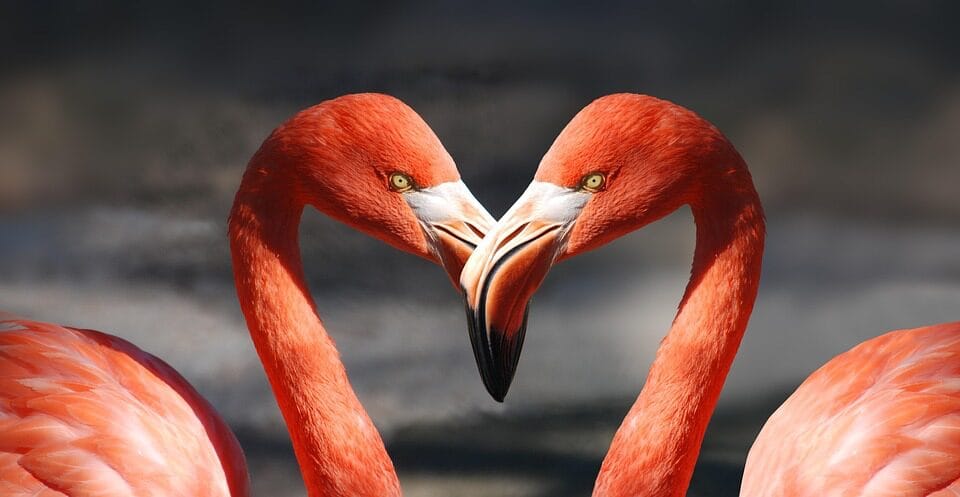There is an opinion that in the spring people are overwhelmed by a hormonal storm and at this time of year they are more romantic. We decided to check whether this belief is supported by statistical and scientific evidence.
They write about the special influence of spring on libido medical news sites, lifestyle publications and blogs for women And men. “In spring every sprout comes up. This also applies to the man,” shares folk wisdom website of the newspaper "Moskovsky Komsomolets". Forum users are given the question of which gender people experience greater attraction at this time of year, and the media, including citing expert assessments, answer: Everyone wants sex. However, there are also skeptics countingthat the influence of spring on libido is overestimated.
WITH medical point of view, sexual desire is a set of factors that incline a person to sexually active behavior or averts him from it. Sexologists determine attraction as a combination of visual, biochemical, emotional and biomechanical signals that trigger a series of hormonal reactions that can lead to the successful fertilization of an egg by sperm. On the intensity of attraction influences a person’s age, state of health (including mental health), cultural factors, the nature of the relationship with a partner, hormonal levels, taking medications and other substances, and for women - also the phase of the menstrual cycle. But is there a place among these factors for the time of year?
To strictly assess the level of sexual desire depending on the time of year, it would require, on the one hand, regular surveys of a large and representative sample of people to collect subjective information about desire, and on the other hand, constant medical examinations of sample participants to record objective data. No studies with this design could be found. Another limitation is the difference between calendar and climatic spring, which occurs at different times in different regions. At the same time, there are a number of indirect data showing the seasonality of sexual desire.

For example, you can consider the time of birth of children in different countries. Of course, the emergence of attraction does not always lead to sex, and sex does not always lead to conception. But it is logical to assume that in large samples of people the correlation will be observed. Another factor that may reduce the reliability of conclusions based on this approach is the prevalence of contraceptives. However, according to WHO statistics, in 2023, modern methods of contraception in the world will enjoyed less than half of women are of reproductive age, and previously this figure was even lower. Therefore, with some error, it is still possible to rely on data on the number of births.
Let's look at data for different countries. Peak births in Russia have to for the second half of summer - according to statistics, in 2000–2022, babies were most often born in July and August. It turns out that the peak of conception (with an average gestation time of 40 weeks) occurred in October and November. Absolutely similar situation observed in the USA. In 2014, scientists from the University of Michigan summarized statistical data for the previous 78 years and found that in more northern states, children are more often born in the summer, but in the southern states this peak is shifted to autumn. They also compiled a summary map for the countries of the Northern Hemisphere - it turned out that the further a country is from the equator, the earlier in relation to the beginning of the year the peak of childbirth occurs there. For example, in Finland he have to at the end of April, and in Jamaica - already in November. If you count the same 40 weeks from these peaks, it turns out that in Finland conceptions most often occur in the second half of July, and in Jamaica - in February. If conception peaked in spring, then most babies would be born in winter. However, on the graph compiled by the authors of the study, this is the “emptiest” area.
Having analyzed data from different countries of the world, scientists found that from the 1970s to the 2010s, in none of them did the peak of births occur in December (and the peak of conceptions in March). Only in Libya, and only in 1972–1981, was the most productive month in January (conceptions therefore occurred in April). In three other countries and one island (Azerbaijan 1992–2004, Iran 1999–2004, Tunisia 1971–1976, and Guernsey 1973–1979), births peaked in February and conceptions peaked in May. It turns out that from the point of view of conceiving children, the spring months are the least “popular”.
Such statistics generally correlate with the observations of biologists, who note a clearly defined seasonality in male fertility. This conclusion was reached, in particular, by Israeli scientists who analyzed 6455 semen samples collected in different months of the year. Both from a quantitative and qualitative point of view, “spring” sperm was inferior to “summer” and “autumn” ones. Researchers from Duke University (USA) conducted a similar experiment, but measured testosterone content (hormone, including respondent for the emergence of sexual desire in men) in the saliva of volunteers at different times of the year. The highest concentrations were observed in autumn, and the lowest in spring. In turn, Turkish scientists found outthat the production of testosterone, as well as the frequency of thoughts about sex and ejaculations (the first indicator was measured through a blood test, the other two through a questionnaire) depend on air temperature. In the winter months, when the average temperature in the region where the study was conducted was around -15 °C, all three indicators were significantly lower than in the summer, when the thermometer reached +25 °C. It turns out, on the one hand, men want sex less in the spring than in the fall, due to low testosterone levels; on the other hand, they are less fertile at this time of year. Moreover, if spring has arrived only by calendar, but not by climate, there will be no significant increase in sexual activity.
It probably can affect men's sexual activity. influence Another hormone is melatonin. At least animal studies show that it participates in the regulation of reproduction. In species that reproduce in long daylight conditions, melatonin reduces the level of sexual activity, and in species that prefer short daylight hours for procreation, on the contrary, it increases it. People, as statistics and studies of male fertility show, belong to the second type. At the same time, the production of melatonin in the human body, as demonstrated research, among residents of the Northern Hemisphere, has a pronounced peak in winter, during the darkest time of the year. Therefore, under conditions of shorter daylight hours, people’s sexual activity is most likely increased, and under conditions of longer daylight hours, it is reduced.

In women, sexual desire and, of course, the window of conception primarily depends on the phase of the cycle. Usually the peak of desire arises one to two days before ovulation and continues throughout the entire ovulatory phase. However, seasonality also plays a role. In 2022, an international group of scientists analyzed data from Clue, a popular menstrual cycle tracking app. The researchers had records of more than 500,000 women over 180 million days. Clue users not only keep a cycle calendar, but can, among other things, assess the level of their sexual desire, enter data on sexual intercourse and acts of masturbation, pregnancy and the birth of children. Scientists have discovered a number of patterns: women’s sexual activity not only fluctuated depending on the phase of the cycle, it was higher on weekends and some holidays. In some countries (for example, France), increased sexual activity among users was observed in July and August, including due to vacations, when they had more free time. Another peak (in different countries) occurred during the longest nights of the year, and in the Northern Hemisphere, where it is close to the New Year and Christmas holidays, it was even more pronounced than in the Southern Hemisphere.
Probably, such seasonality, expressed to varying degrees in men and women, has evolutionary component. In animals with a long pregnancy, conception usually occurs in the fall, in winter the fetus receives nutrition from the mother, and is born when there is a lot of food around (for example, in July or August). But for animals with a short gestation period, it is “more profitable” for conception to occur in the spring, shortly before the rich summer months. Humans are a prime example of the first type, but cats are of the second (hence the expression about March cats).
Although it may seem that a person is no longer so dependent on the seasonal availability of resources, the timing of conception still affects the success of the pregnancy and the health of the children born. Scientists from Princeton University in 2013 collected data on almost 1.5 million children conceived in different months of the year. It turned out that children conceived in May were most often born prematurely, with children conceived in April in second place. At the same time, according to data WHO, complications arising from preterm birth are the leading cause of death among children under five years of age.
The statistical data and conclusions of biologists are confirmed by the research of their colleagues from other scientific fields. For example, in 2012, American scientists assessed the seasonality of human sexuality using Google searches. Researchers focused when users were more likely than usual to search for porn, be interested in sex services, or try to find a partner. The peaks of queries related to pornography occurred in December and June, and those related to prostitution and searching for a couple - in January and July.
Finally, the dependence of male desire on the season has also been studied from a psychological point of view. Scientists from the University of Wroclaw in different seasons showed A group of volunteers were given three sets of photographs and asked to rate the attractiveness of the women depicted in them. The first set contained photographs of women of different sizes in swimsuits, the second - photographs of women's breasts of various sizes, and the third - photographs of women's faces. It turned out that female breasts had the most pronounced seasonal attractiveness - with a clearly defined peak in winter and decline in summer. Swimsuit photos were rated as less arousing overall, but the fluctuations were the same as for bust shots. Faces excited the volunteers the least, and their attractiveness did not depend at all on the time of year. Scientists have suggested that in winter women wear covered clothes and therefore at this time of year their nude or semi-nude photographs seem more arousing to men. When similar visual stimuli are present on any beach, the severity of the experience decreases. In the spring - apparently after a period of visual starvation - women were more attractive than in the fall, but much less than in winter. Unfortunately, these scientists did not conduct a study with a similar design in which women assessed the visual attractiveness of men.
Thus, numerous indirect data refute the myth about increased sexual activity of people in the spring. Thus, statistics show that conceptions most often occur, on the contrary, in autumn and winter. And this is logical, because from a biological point of view, autumn is the most productive period for men in terms of reproduction. At this time of year, they experience a surge in testosterone and improve sperm quality. Women do not have a clearly defined seasonality of sexual desire - it increases on weekends, holidays and the vacation season. It's likely that the connection between this time of year and increased sex drive is purely cultural. Perceiving spring as the season of nature's awakening, people believe that their libido should also awaken from winter hibernation. But in reality, there is no scientific evidence that this actually happens for most people.
Cover image: Image by Franky from Pixabay
If you find a spelling or grammatical error, please let us know by highlighting the error text and clicking Ctrl+Enter.






